This is the second part of the "Why Does BMW M3 Steer So Well?" series. For those of you who’ve missed the first part you can read it here Why Does BMW M3 Steer So Well? … Part 1. BTW, this article was taken from Motor Trend Magazine (November 1998). I hope you enjoy the article.
By Kim Reynolds
To check on the M3’s steering linearity, we ventured to the skid-pad where we painted two extra circles, at 160- and 120-ft. diameters, concentric within our standard 200-footer. Circling all three, I progressively built up speed, carefully recording the steering angle all along the way. The resulting curves of lateral-g versus steering angle appear herewith.
They’re not actually linear, are they? They smoothly bend, with more and more steering angle being needed to achieve additional increments of cornering force. Why? The biggest reason is that the BMW is a “front-steer” automobile (no, not as in “front-wheel drive”). The term refers to the steering rack’s location ahead of the front wheels’ centerlines. This placement matters because of the loaded outside front wheel’s tendency to move inward under cornering (due to suspension bushing compression). Assuming you’re holding the steering wheel still (and we know the rack’s bushings don’t flex much), the front-mounted steering rack forces the wheels to reduce their steering angle, turning a little less sharply into the corner. It’s a benign understeer sensation that’s plenty preferable to the spooky-feeling alternative; i.e., having the tie rods behind the wheels’ centers, causing the wheels to twist further into the corner under lateral load as if they have a mind of their own.
Around the skidpad, my hands also noticed that the M3’s steering effort suddenly starts to diminish as the BMW’s tires proceed to squeal. Welcome to the phenomenon called “pneumatic trail.” Dr. Post mentioned it, but for additional illumination I turned to R&T pal Doug Milliken who co-authored (along with his father, Bill) the extraordinary textbook Race Car Vehicle Dynamics (available from the Society of Automotive Engineers, [412] 776-4970).
You’re probably already aware of what common caster does. Like castered wheels on shopping carts, it’s the weathervane effect where a wheel pivots around an axis that’s ahead of the actual contact point with the ground, stabilizing the wheel’s direction. The physical distance between the pivot axis (on cars it’s called the “kingpin axis”) and the contact patch is a “lever-arm” called trail (of course, it’s a distance, not an actual, physical arm). While cornering, this trail causes a goodly torque to arise around the wheel’s kingpin axis. Fed through the steering links, it’s the creature that causes most of what you feel at the steering wheel.
Pneumatic trail adds an extra, and terribly important, wrinkle to the story. While a tire corners, it seems that the lateral forces it creates are not uniformly spread around the tire’s contact patch (as you’d first think); they’re actually concentrated somewhere behind the patch’s center. In other words, the lever arm that gives rise to steering feel actually consists of two ingredients, the geometrically obvious mechanical trail I mentioned – plus this new added element, pneumatic trail.
Now it happens that as the limit of adhesion is approached, the tire’s lateral forces gradually migrate back to the center of its contact patch. If you’re following along, this zeros out the pneumatic-trail factor entirely (leaving only mechanical trail), consequently reducing steering effort. A communicative steering system like the M3’s possesses an ample percentage of pneumatic trail; think of it as the language tires use to speak to us about their limits. And it’s easily drowned out by the background noise of too much steering boost or excessive mechanical trail.
As an aside, remember those video games Paul, Patrick and I were playing? The most sophisticated of them – better called simulators – mathematically employ all of these effects. According to Carey Kriger of Digital Vehicles (maker of Formula One simulators) and Rick Moncrief, whose company, Silicon Entertainment, builds NASCAR simulators, the most convincing steering feel arises from strictly mimicking things like trail. No phony baloney stuff.
But exceptional steering feel like the M3’s also relies upon a soup of other psychologically synergistic ingredients. For example, the BMW’s large windows provide a panoramic view of the road’s texture that your mind can easily, and subconsciously, integrate with what your hands are feeling. Likewise, add in the tires’ whispers, messages that could easily have been masked by too much sound-deadening material. And the little vibrations that jiggle the steering wheel rim over tiny bumps, oscillations on the order of an eighth of an inch – not so large as to annoyingly shake your hands, but enough to be subconsciously noted. Reduce the windshield’s view, quiet the tires, or dampen the steering gear, and I’ll guarantee you’ll be a lot less impressed by the M3’s steering feel.
In other words, there really isn’t a single, simple answer to the title of this story. It resides in a thousand little fragments, from stiff steering bushings to ample pneumatic trail, to subtle steering boost, to even simply letting the driver hear the tires and easily see the road. Add them up as scrupulously as BMW has learned to do, and you have in your hands what feels like steering magic.




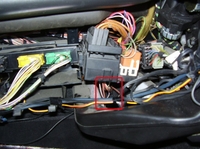
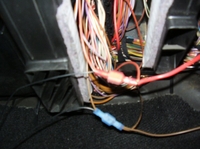
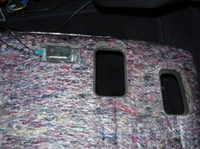
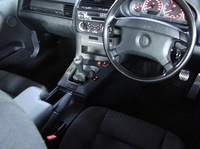
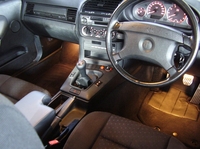
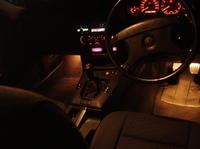

 (4.86 out of 5)
(4.86 out of 5) (4.07 out of 5)
(4.07 out of 5)



